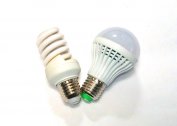An acoustic switch is a device that closes and opens the circuit from loud sound or popping. It can be used to turn on lighting in the house, TV, musical equipment and other household appliances. An acoustic switch makes the use of electrical devices simple and convenient.
Types of sound switches
The following types of acoustic switches are available:
- Cotton responsive appliances. It is pre-programmed for how many pops one or another command will be executed.
- Devices that respond to a voice or a preset command.
- Combined devices (for example, a light-acoustic switch). They can be installed sound, light sensors or motion sensors. These are the most technological devices in which the risk of false alarms is minimized.
- Devices for low-current systems. Used to connect the camcorder or send a command to the guard.
Acoustic switches have become popular due to their ease of use. They are useful for the elderly, bedridden patients and young children. Devices of this class are already actively used in the Smart Home system.
Advantages and disadvantages
 The most important advantage of the sound switch over the classic is simplicity and ease of use. The user does not need to think where to install the switch.
The most important advantage of the sound switch over the classic is simplicity and ease of use. The user does not need to think where to install the switch.
Main advantages:
- work with any electrical appliances or light sources;
- the ability to turn on and off a household appliance or light, being anywhere in the room;
- lack of excess wires;
- reliability and long service life;
- noiselessness;
- safety.
Disadvantages:
- Modern sensors can recognize the sound that is needed to turn on and off. The user needs to know exactly which signal the sensor will respond to.
- Sensitivity zone is limited. In a large room, you will have to clap loudly or come closer to the sensor. If sensitivity is increased, the sensor may falsely respond to similar sounds.
For radio amateurs who want to make a cotton switch with their own hands, the disadvantage is the complexity of the electronic circuit.
Operating principle
Sound switches work as follows:
- a person makes a sound for inclusion (clap, phrase);
- the microphone picks up the signal and transmits it in the form of voltage to the circuit;
- from the circuit, the signal is sent to the transistor, and from it to the relay coil;
- an electric current begins to flow through the coil, because of which the core is drawn in;
- circuit contacts are closed;
- current flows to a lamp or household appliance, because of which it turns on.
Acoustic light switches can work continuously. But you can also set the time interval through which the light or the device turns off.
Specifications
The standard device has the following parameters:
- food from a network of 220 V;
- maximum power of all connected devices 300 W;
- the sound is adjustable within 30-150 decibels;
- operating temperature range from -20 to +40 degrees;
- degree of moisture and dust protection IP30.
The circuit breaker can operate with serial incandescent or halogen sources, LEDs and energy-saving lamps.
Connection diagram and step-by-step installation instructions
 The device is installed on a single-key or two-key switch.It is put in an open circuit between the switch and the lamp. The network connects to white wires, to black - load.
The device is installed on a single-key or two-key switch.It is put in an open circuit between the switch and the lamp. The network connects to white wires, to black - load.
If a light-acoustic switch (SAW) is installed in the house according to a scheme with two fluorescent lamps, the procedure is as follows:
- connect the white wires to the mains, black - to the load of the lamps;
- connect the white wires with phase and zero using the terminals;
- connect the black wires to the lamp lamps that are connected in parallel to each other;
- turn off the classic single-key switch;
- deliver a suitable sound power;
- adjust the sound sensor.
First, the response to claps of different volumes is checked. Then you need to test how the switch behaves when making other sounds (vacuum cleaner, power drill, phone call, cymbal knock). If the device responds to unwanted sound, you can adjust the microphone sensitivity.
Dimmer Acoustic Switch
Dimming is the adjustment of the load that the device consumes. Using dimmers, you can smoothly turn on the light, adjust the brightness of the LED lamp or incandescent bulb. Not applicable for fluorescent lamps. Also, dimmer devices can be used to adjust the temperature in irons, soldering irons, kettles and other household appliances.
An optical-acoustic switch is needed for dimmer switching on electricity. The principle of operation of the chip is as follows:
- the signal in the form of sound hits the microphone;
- sound translates into momentum;
- the pulse is sent to the microcontroller and passes through the amplifier, charging the capacitor;
- a large charge is reached, after which the comparator switches;
- zero at the output changes to a pulse;
- a transit generator is activated, which directs the pulses;
- the triac opens, through which the power to the lamp passes;
- the capacitor loses the voltage level;
- a signal with increasing phase deceleration is applied to the triac;
- the light turns on smoothly.
If you correctly select all the ratings of the components, the lamp turns off with a pause of up to 3 minutes. For the dimmer to work, you need a lamp with a power of at least 40 watts. The voltage on the optical-acoustic switch smoothly varies in the range from 0 to 220 V.
Benefits:
- thanks to smooth inclusion extends lamp life;
- the ability to create lighting of the desired brightness in a specific place;
- the ability to control light using intelligent systems.
The disadvantages include the inability to open the network in the event of a short circuit and the lack of a protective function against overloads.
Dimmers are not recommended for use with radios, televisions and products with pulse power, as they cause interference.
How to choose
Before buying, you need to decide in advance for what purpose an acoustic switch is bought. Devices for home use, for a garage, porch or street are different, since in each condition there is a different level of external noise. Wrong choice will lead to the fact that the device either will not work, or will respond to any sound.
Cotton switches can be installed on 4 devices. For example, one clap will be responsible for turning on the light, two for the fan, and so on. Claps need to be done in a row.
For chandeliers with a large number of lamps, you can buy a switch with several buttons. Such devices have several channels, and they can be connected to a specific group of light sources.
The sound switch is a convenient device for turning on and off the light or household appliances. They can respond to voice commands, pops and other preset sounds. Such devices are used in the Smart Home system; they can also be installed in an ordinary apartment.





